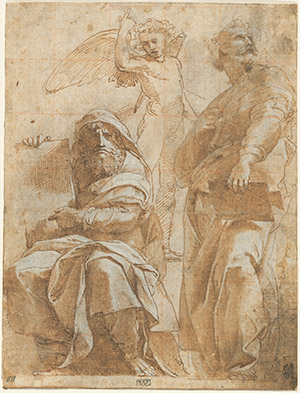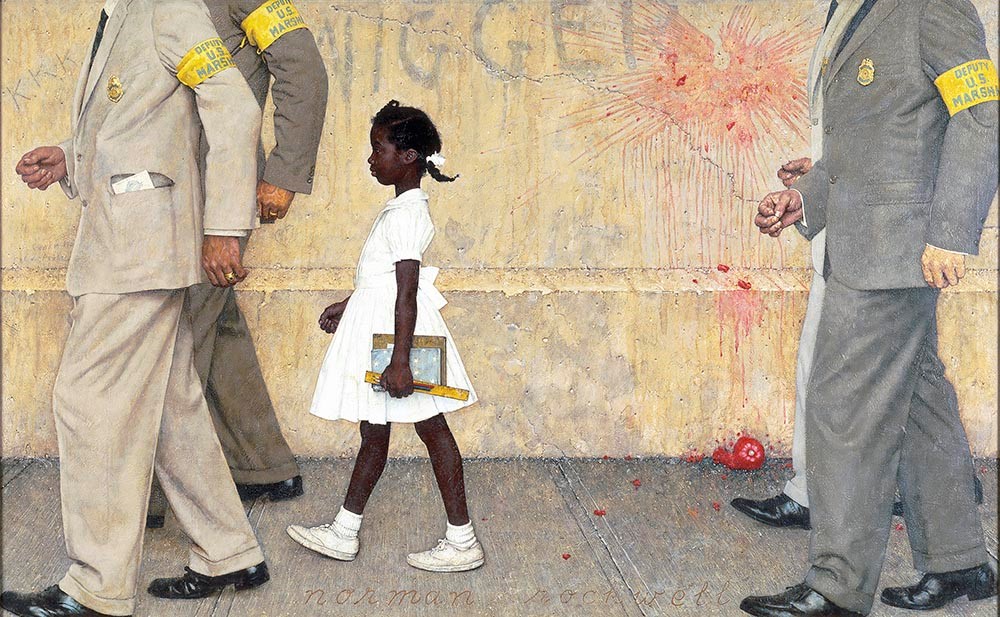So, we’re all stuck at home. There’s a world-wide viral pandemic — people are out of work, kids are home from school. What can we do while waiting for normal to return?
You might be like me — you’re into art — I like art. I’m not an artist, but I like seeing art in all its forms and I like discovering new things and learning about old things.
We also might have thought from time to time, “Maybe, when a get some time I’ll check out XYZ?”
And maybe you did, or didn’t, but now might be that chance. However, there’s another problem — social distancing has caused everything to shut down, and even with the internet of everything it can be overwhelming where to start.
So, to lift us out of this depressing situation of imposed isolation, I’ve done a little homework (while drinking ice cold milk I almost had to shank someone for at a grocery story) for us and mapped out some sites on the interwebs for us all to get lost in.
We all can Google things and see what come up — that’s kinda what I did. I certainly have some favorites. The US taxpayer has acquired some of the greatest art collections known to the world. The National Gallery of Art is a great place to start.

Google “great art shows now” and you’ get a list, for example, from Bloomberg by arts writer James Tarmy of must-see exhibitions for 2020 — all but closed or canceled now — but it showcases artists and institutions that can be explored on their own. Maybe you won’t see the exhibits as intended, but you can view the artwork and more.
So, we may not be going to NYC, Rome or Paris in person anytime soon, we can venture there and see some sights (and sites).
There’s an incredible “Degas at the Opera” show — the one that came all the way from Paris. You can’t buy a ticket, but you can still view it. His 100 or so pieces that captured the scenes of the Paris Opéra tells the visual story of his fascination with dancers and insight between the realities he saw and the visuals he painted.
Gerhard Richter may not be household name to most, but his work is among the highest priced currently for a living artist. One of his pieces went for just under $45 million at auction in 2015 — and he hasn’t had a show in the US in around 20 years and his show at the Met Breuer will probably be his last during his lifetime. You can see for yourself what all the fuss is about.
Don’t worry, folks! Museums will eventually reopen. But in the meantime: We are lucky. There are plentiful options out there. For you. For your spouse. For your kids. For that mother-in-law you struggle to have conversation with. For your new paramour — you could go on a virtual date to keep the romance going!
Closer to home, there was a show I’m regretting not seeing. As I write this, today, March 22, was the day of the closing — although no one was there to see it go — of “Norman Rockwell: American Freedom” at the Museum of Fine Arts Houston. Who couldn’t use a little bit of Rockwell’s Americana right now? While not always embraced by critics, you would be hard pressed not to see the heart and soul of American life — and his straight-up tackling of controversial subjects of the day in and through everyday life.

Art can help save us — relaxing, arousing, definite and indefinite. It’s a bond within humanity. It helps to bind us in so many ways. It makes meaning, it creates a narrative of our lives with song, dance and visual stimuli. Its beauty is in the eyes of those who behold it. It’s truth of love, hate, and fear. And on and on and on. It’s been said art is what separates us from all other creatures on this earth. It shows the best of us and the worst of us.
It binds communities together — it binds Southeast Texas. You hear about how people feel excluded when it comes to art. The architecture, the “don’t touch” or elitist vibe — it can be intimidating.
That is psychological. It’s actually amazing how accessible art museums have become. Great art used to be reserved for monarchs, aristocrats and the church. Now, everyone is welcome. Artists make art for people to see, to enjoy, to create some sort of response.
And if that’s true for in-person visits, it’s even more so online. There are incredible resources — thank you, Internet. Podcasts, art documentaries, video art, museum websites, books and so much more.
From the soothing how-to-paint videos of Bob Ross that my son and I watch on YouTube — to William Kentridge’s 2012 Charles Eliot Norton Lectures at Harvard University that I discovered in a random newspaper article online — there’s something to suit every mood, every taste, every flavor of laziness.
Here are some I have found or heard others refer to:
Podcasts
I’m new to podcasts and very random to what I choose. It might be local like the A2Z podcasts from local dudes Aaron Barnhill and Zach Bowman. One I’ve started listening to is the Art Newspaper’s, hosted by Ben Luke. The latest episode has a discussion of a series of paintings by Titian that Lucian Freud once called “simply the most beautiful pictures in the world.” Every episode is quality.
I also have listened to “The Lonely Palette,” hosted by Tamar Avishai, each episode focusing on a single painting, and Tyler Green’s “The Modern Art Notes Podcast,” which airs intelligent, in-depth interviews with artists and curators. With 436 episodes in the can and counting, “Modern Art Notes” is incredible. At one day — you have more than a year’s worth — I know I shouldn’t say that and we all hope this nonsense is over soon.
But if you want to try to comprehend the full scope of art and its connection to life, from prehistoric times to the present, “A History of the World in 100 Objects,” produced by the BBC and the British Museum and hosted by Neil MacGregor, is pretty much unbeatable.
Museum websites
Almost every U.S. art museum, big or small, has a website. Many of them are not only beautifully presented but also fantastic resources. Some offer virtual guided tours.
A really good one I discovered this weekend is Boston’s Isabella Stewart Gardner Museum that has a tour with its director of security Anthony Amore, retracing the path taken by the thieves who broke into the museum on March 18, 1990. One of art’s greatest heists on record — still unsolved 30 years later!
Museum websites are great because viewers can see works not on display. Keep in mind many museums have collections larger than their gallery wall and floor space. Just type in the name of your favorite artist, or category of art, and press search. Another one of my favorites is the Museum of Modern Art where you can search just like that.
Some museums will let you set up an appointment to see your favorite works in person, in a specially set-up study room. Make plans now and think about it and set an appointment for later in the year. Plan a surprise date or trip around it.
Major museum websites also present expert audio about highlights of their collections. The Met produces short videos of contemporary artists talking about their favorite works. It’s a wonderful series. And all of this is just for starters.
Other websites
Teaching at home? Kiddos climbing the walls? A couple of sites to learn a little or a lot include the Khan Academy and Smarthistory which have terrific short videos about major artworks and bigger topics within art history. Either dip in and out according to your own whim or take a carefully curated course. You could lose yourself in these for months, if not years. It’s all easily available online and free.
Google Arts and Culture, which has its own app, is impressive and a personal favorite. You can take virtual tours of the world’s greatest museums and get insanely close up to some of the world’s most famous paintings. You can also visit important cultural sites, such as Indonesia’s Borobudur, the world’s largest Buddhist temple complex, or view smart, creative videos focused on specific objects — for instance, Vivienne Westood’s “Boucher” corset in London’s Victoria and Albert Museum. As an educator, I use a lot of Google products — they’re easy to use and keep track of.
Art documentaries
There have been so many great art documentaries over the years. Personally, I am partial to the very British, sometimes very cheesy documentaries on YouTube like “Timeline – World History Documentaries” narrated by the Waldemar Januszczak and Simon Schama. I also like the four-part series on Northern European Renaissance art presented by Harvard University’s Joseph Koerner. If you want to go farther back in time, it’s hard to beat Robert Hughes’s “The Shock of the New,” John Berger’s “Ways of Seeing” or Kenneth Clark’s “Civilization.” All were groundbreaking television and enormously influential.
There’s also a nine-part 2018 documentary, “Civilizations,” that tried to take on Clark and tell a sweeping story not just about European civilization, as Clark had done, but also about the history of the entire world. Many of these also appear on Netflix, Amazon Prime or Hulu.
Online video art
Online video art is a wild genre. Much of it, it’s true, is just plain weird. But video artists are responsible for some of the most amazing things ever put on scene.
If you want an example of video art that will hypnotize your kids so you can take a nap, show them “The Way Things Go,” a video, apparently about cause and effect, by Swiss artist duo Peter Fischli and David Weiss. It’s utterly amazing.
It’s a fun exercise to place video art in roughly the same category of cultural experience as music videos. They can be disastrously dull or as wonderfully experimental, visually brilliant and many-mooded as great pop songs. I often show vids from bands I listened to in the 70s, 80s and early 90s.
I might go from some Bauhaus’ “She’s in Movies” to show my kids when MTV used to play actual music and they respond with something like H.E.R. “Slide” or something like that, and we’ll talk about what the songs and vids are trying to convey.
Another recent favorite is after streaming “Izabella Barta” episode of the satirical/mockumentary series Documentary Now with Cate Blanchette — nonsensical hilarity transforms to real world research after finding out the show was a play on real life artist Marina Abramovic.
That should be enough to get you started — there’s more I can offer, but search for yourself and what interests you.

